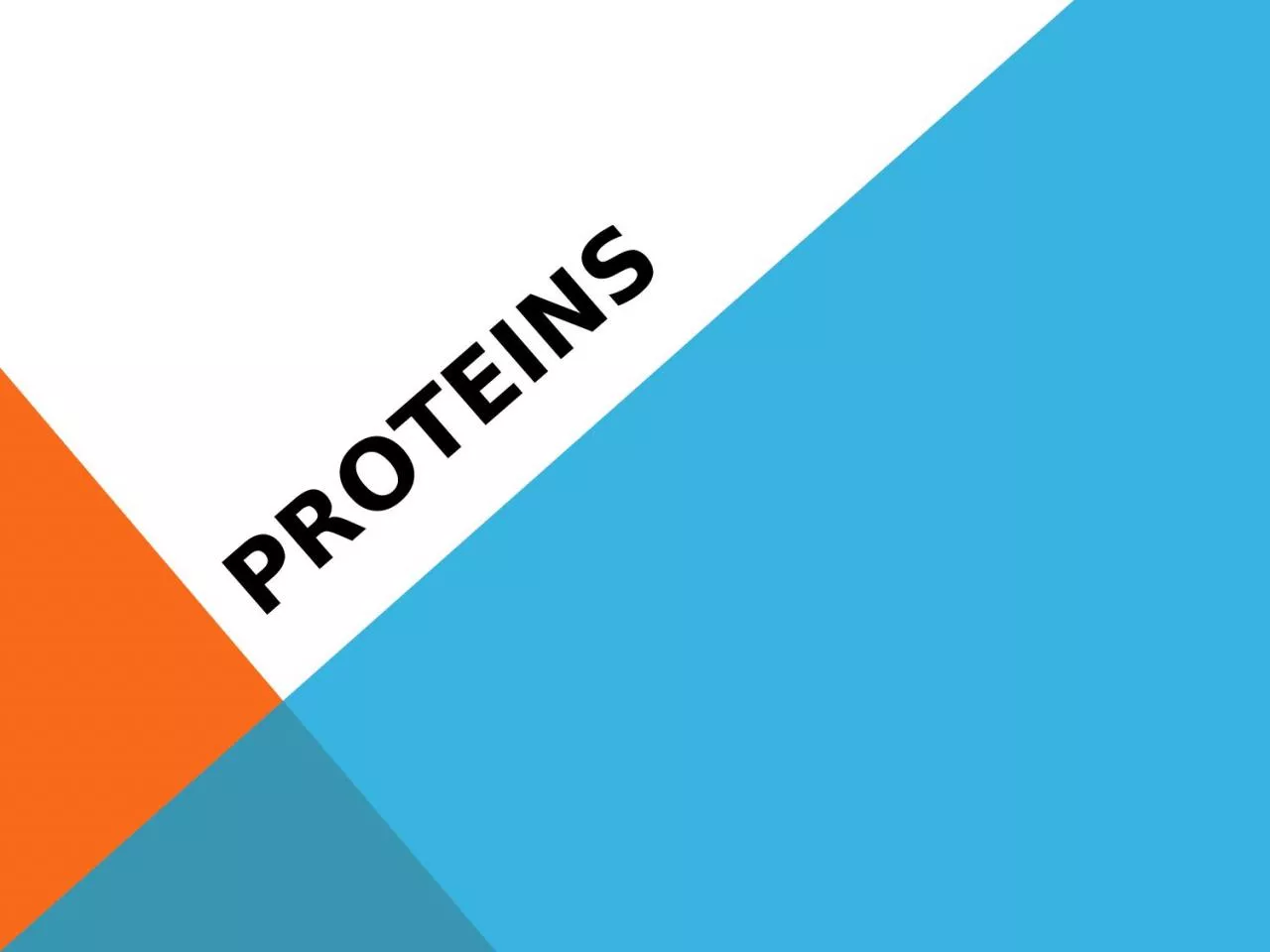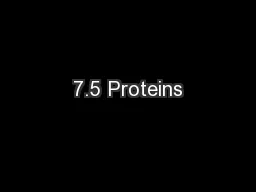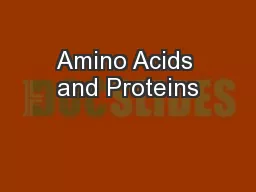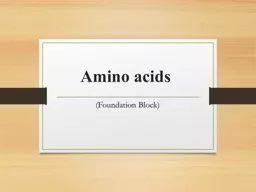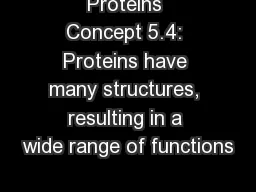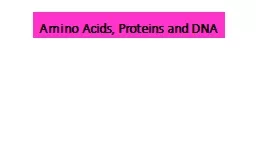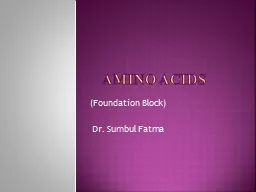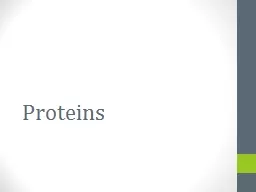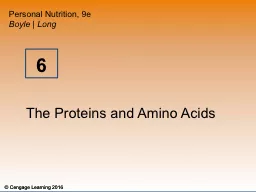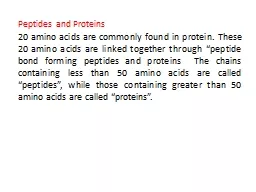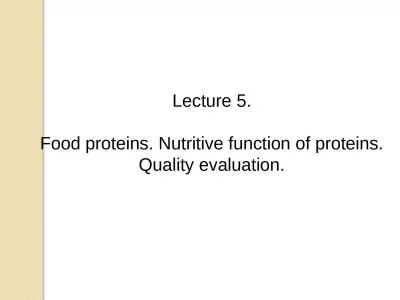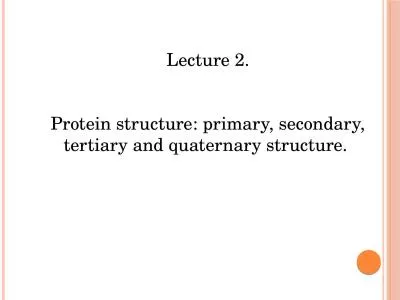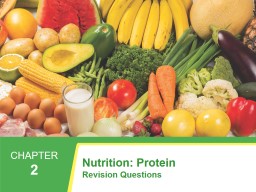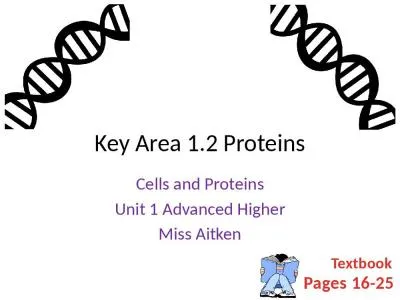PPT-Proteins AMINO ACID: STRUCTURE AND CLASSIFICATION.
Author : DiamondsAreForever | Published Date : 2022-08-04
Amino Acids are the building units of proteins There are about 300 amino acids occur in nature Only 20 of them enter in proteins synthesis Structure of amino
Presentation Embed Code
Download Presentation
Download Presentation The PPT/PDF document "Proteins AMINO ACID: STRUCTURE AND CLASS..." is the property of its rightful owner. Permission is granted to download and print the materials on this website for personal, non-commercial use only, and to display it on your personal computer provided you do not modify the materials and that you retain all copyright notices contained in the materials. By downloading content from our website, you accept the terms of this agreement.
Proteins AMINO ACID: STRUCTURE AND CLASSIFICATION.: Transcript
Amino Acids are the building units of proteins There are about 300 amino acids occur in nature Only 20 of them enter in proteins synthesis Structure of amino acids Four different groups . The 20 different amino acids. 7.5.1: Explain the four levels of protein structure, indicating the significance of each level.. Peptide bonds link the amino acids together . Polypeptide with five amino acids. . The 20 different amino acids. 7.5.1: Explain the four levels of protein structure, indicating the significance of each level.. Peptide bonds link the amino acids together . Polypeptide with five amino acids. . B.2. Properties of 2-amino acids . (B.2.2). Zwitterion. (dipolar) . amino acids contain both acidic and basic groups in the same molecule . therefore, are . amphoteric. in nature (capable of behaving as acids or bases). (Foundation Block). Learning outcomes. What are the amino acids?. General structure.. Classification of amino acids.. Optical properties.. Amino acid configuration.. Non-standard amino acids.. Derivatives of amino acids.. Proteins account for more than 50% of the dry mass of most cells. Protein functions include structural support, storage, transport, cellular communications, movement, and defense against foreign substances. amine group. Draw. a carboxylic acid group. Join. them together to form a molecule with an amine and . a carboxylic acid . group. Amino Acids. Building blocks of proteins. Two functional groups: a carboxylic acid and a primary amine. ). Dr. . Sumbul. . Fatma. Learning outcomes. What are the amino acids?. General structure.. Classification of amino acids.. Optical properties.. Amino acid configuration.. Non-standard amino acids.. Polypeptides . are chains of amino acids linked together by condensation reactions. the main, or only, component in proteins. Some proteins are composed of only one polypeptide chain, while others are made of 2 or more. 6. 6.1 Differentiate . between essential amino acids and nonessential amino acids.. 6.2 List . the functions of protein in the body.. 6.3 List . the steps for protein digestion and absorption in the body. . Peptide bond formation. : . α-carboxyl group of one amino acid (with side chain R1) forms a covalent peptide bond with α-amino group of another amino acid . ( . with the side chain R2) by removal of a molecule of water. The result is : Dipeptide ( i.e. Two amino acids linked by one peptide bond). By the same way, the dipeptide can then forms a second peptide bond with a third amino acid (with side chain R3) to give . Nutritive function of . proteins.. Quality evaluation.. Proteins: a major food macro-component. . Food is the major source providing proteins to human body:. . food with animal origin. food with . plant. Proteins are biopolymers, made of the 20 L- . α. -amino acids linked by peptide bonds.. Polypeptide backbone is a repeating sequence of. . N-C-C-N-C-C…. The side chain or R group is not a part of the backbone or the peptide bond.. Explain the formation . of a protein.. Classify proteins according to their chemical structure.. Describe the classification of protein.. Name a food source for the following proteins: albumin . caseinogen. Unit 1 Advanced Higher. Miss Aitken. Pages 16-25. Textbook. Proteomics. Genome:. complete set of DNA. Comprises of coding and non-coding areas. 20-25000 genes in human genome. Proteome:. Entire set of proteins that can be expressed from a genome.
Download Document
Here is the link to download the presentation.
"Proteins AMINO ACID: STRUCTURE AND CLASSIFICATION."The content belongs to its owner. You may download and print it for personal use, without modification, and keep all copyright notices. By downloading, you agree to these terms.
Related Documents

